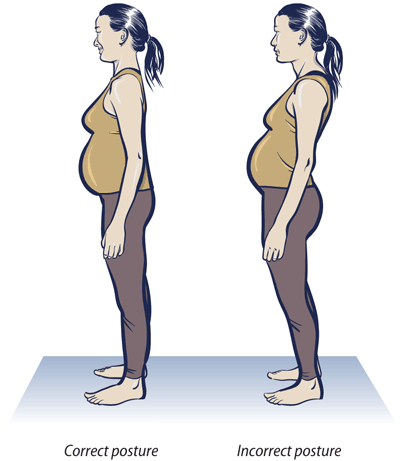Back
Does Pelvic Floor Physical Therapy Help After Giving Birth?
By Dr. Christine Martirez PT, DPT on 6/4/2024

Giving birth is a transformative experience that brings profound changes to a woman’s body. The journey of pregnancy and childbirth can significantly impact the pelvic floor muscles and overall body posture, leading to various postpartum issues. Pelvic floor physical therapy (PFPT) can play a crucial role in aiding recovery and restoring function. This blog post will explore what happens to the body during pregnancy, common postpartum issues, and how pelvic floor physical therapy can help in recovery.

Changes to the Body During Pregnancy
Postural Changes:
Shifts in Center of Gravity:
As the baby grows, a woman’s center of gravity shifts forward, causing an anterior tilt in the pelvis and an increased curvature of the lower back (lordosis). This can lead to back pain and changes in walking patterns.
Weight Gain:
The additional weight carried during pregnancy puts extra pressure on the spine and joints, leading to discomfort and postural imbalances.
Breast Changes:
Enlarged breasts can contribute to a rounded shoulder posture and upper back strain.
Pelvic Floor Muscle Changes:
Increased Pressure:
The growing uterus exerts pressure on the pelvic floor muscles, which support the bladder, uterus, and rectum. This pressure can affect these muscles over time.
Hormonal Changes:
Pregnancy hormones, such as relaxin, cause the ligaments and tissues to soften and become more elastic, which can affect the stability and strength of the pelvic floor muscles.
Stretching and Trauma:
During vaginal delivery, the pelvic floor muscles stretch significantly to allow the baby to pass through the birth canal. This stretching can lead to muscle weakness, tears, and trauma.
Common Postpartum Issues
Diastasis Recti:
This condition involves the separation of the rectus abdominis muscles along the linea alba, resulting in a gap between the left and right sides of the abdominal wall. Diastasis recti can lead to a protruding belly, back pain, and core weakness.
Stress Urinary Incontinence:
The weakening or adaptive shortening of the pelvic floor muscles can lead to stress urinary incontinence, where involuntary leakage of urine occurs during activities that increase abdominal pressure, such as coughing, sneezing, or exercising.
Pelvic Organ Prolapse:
Pelvic organ prolapse occurs when the pelvic organs (bladder, uterus, or rectum) descend into or outside of the vaginal canal due to weakened pelvic floor muscles and ligaments, or poor pressure management through the trunk and abdomen. This can cause discomfort, pressure, and urinary or bowel issues.
How Pelvic Floor Physical Therapy Can Help
Pelvic floor physical therapy offers targeted interventions to address these postpartum issues and support recovery. Here’s how PFPT can help:
Comprehensive Evaluation:
Assessment:
A pelvic floor physical therapist will perform a thorough evaluation, including a review of the patient’s medical history, an assessment of posture and movement patterns, and an examination of the pelvic floor muscles for tone, strength, and coordination.
Individualized Treatment Plans:
Pelvic Floor Exercises:
Tailored exercises to strengthen or relax the pelvic floor and surrounding muscles. Kegel exercises, which involve contracting and relaxing the pelvic floor muscles, can help improve muscle tone and function.
Core Strengthening:
Exercises to strengthen the core muscles, including the transverse abdominis and obliques, which can help address diastasis recti and provide better support for the spine and pelvis.
Manual Therapy:
Hands-on techniques such as myofascial release, soft tissue mobilization, and trigger point therapy can help alleviate muscle tension, improve blood flow, and enhance tissue healing.
Biofeedback:
Biofeedback techniques can help patients become more aware of their pelvic floor muscle activity and improve their ability to contract and relax these muscles effectively.
Education and Lifestyle Modifications:
Posture and Body Mechanics:
Education on proper posture and body mechanics to reduce strain on the pelvic floor and surrounding muscles during daily activities.
Bladder and Bowel Habits:
Guidance on healthy bladder and bowel habits to manage symptoms of incontinence and prevent further issues.
Pain Management:
Strategies for managing pain and discomfort, including relaxation techniques, stretches, and the use of supportive devices if necessary.
Preparation for Labor and Delivery:
Breathing Techniques:
Teaching effective breathing techniques that can be used during labor to reduce stress on the pelvic floor muscles.
Perineal Massage:
Instruction on perineal massage to prepare the tissues for stretching during delivery and potentially reduce the risk of tears.
Postpartum Support:
Ongoing Care:
Continued support and treatment to address any ongoing issues and help the patient return to their desired level of activity and fitness.
Prevention of Future Issues:
Preventative strategies to avoid future pelvic floor problems, including advice on gradual return to exercise and activities.
The physical changes that occur during pregnancy and childbirth can have a lasting impact on the body, particularly on the pelvic floor muscles and overall posture. Common postpartum issues such as diastasis recti, stress urinary incontinence, and pelvic organ prolapse can significantly affect a woman’s quality of life. Pelvic floor physical therapy offers a comprehensive approach to recovery, addressing these issues through individualized treatment plans, education, and support. By working with a skilled pelvic floor physical therapist, new mothers can improve their pelvic health, regain strength, and enhance their overall well-being as they navigate the postpartum period.
Read More:
How Chronic Pelvic Congestion in Men Contributes to Prostatitis By Shannon Strauch, PTA, STMT-1 on 12/11/2024 How lymphatic issues can cause symptoms of prostatitis Prostatitis and Tight Pelvic Floor Muscles: A Comprehensive Guide By Shannon Strauch, PTA, STMT-1 on 12/10/2024 How a tight pelvic floor can be the reason for prostatitis symptoms
Are you ready to live pain free?
Request An Appointment